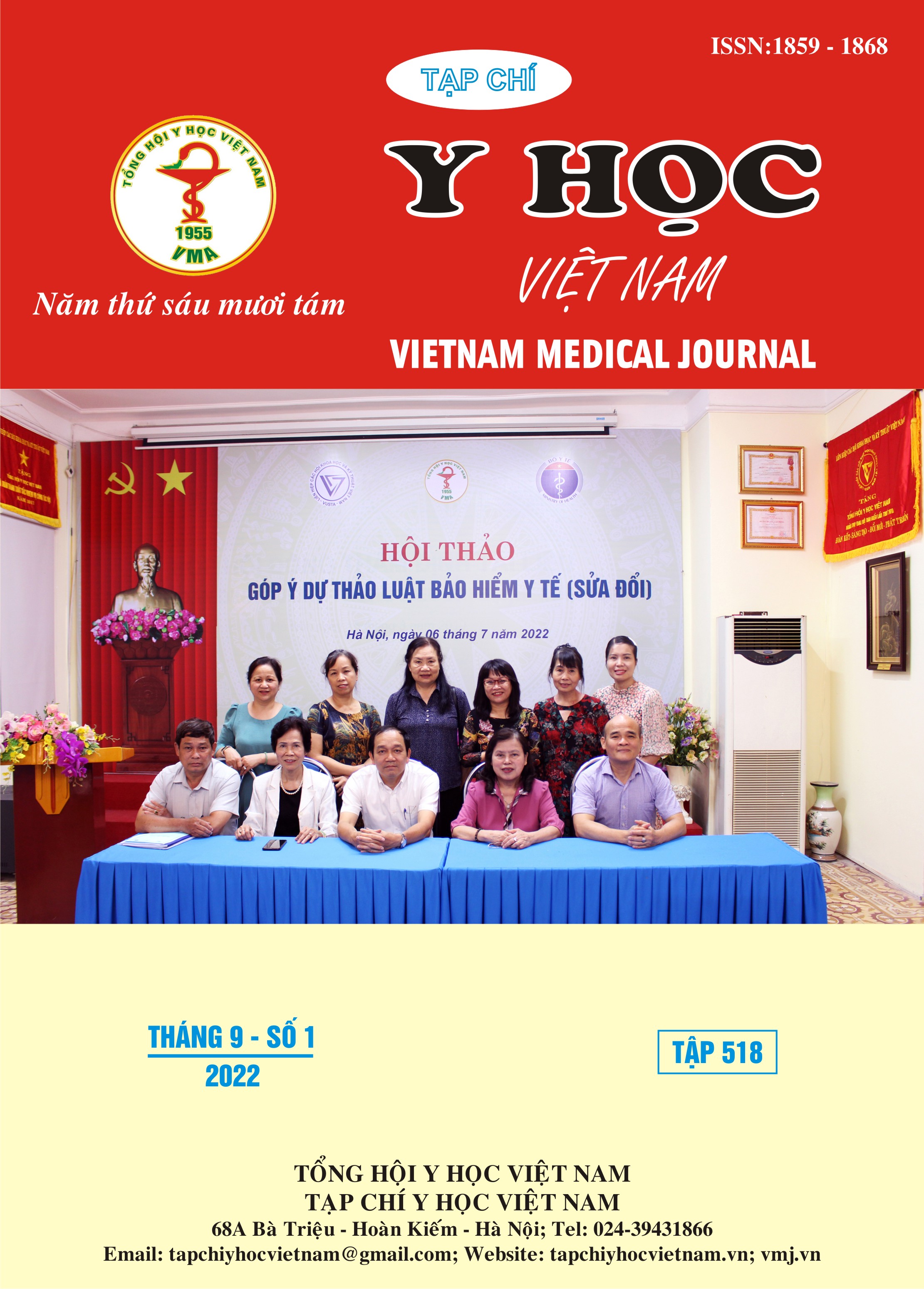SITUATION OF ENDOSCOPIC RETROGRADE LITHOTRIPSY OF THE UPPER THIRD OF THE URETER IN VIETDUC HOSPITAL IN THE PERIOD 2020 – 2021
Main Article Content
Abstract
The study aimed to describe the situation of endoscopic retrograde lithotripsy of the upper third of the ureter inViet Duc Hospital in the period of 2020 - 2021. This is a cross-sectional descriptive study which enrolled 52 patients with urolithiasis at upper third in the department of urological surgery, Viet Duc hospital. Results: The majority of ureteral stones in the upper third were found in men (67.3%), aged 46.9 ± 13.3 years. The average gravel size was 10.81 ± 3.85 mm. The average time of lithotripsy was 33.5 ± 11.2 minutes, the shortest operation time was 17 minutes, the longest surgery time was 60 minutes. Most of the patients with lithotripsy achieved good results (92.3%), and there were no complications during and after surgery (90.4%). Conclusions: endoscopic retrograde lithotripsy of upper third of the ureter is one of the most effective and safe treatment options.
Article Details
Keywords
upper third ureteral stone, endoscopic retrograde lithotripsy
References
2. Trần Văn Hinh. Giải phẫu hệ tiết niệu. In: Các phương pháp chẩn đoán và điều trị sỏi tiết niệu. Nhà xuất bản Y học; 2013:9-24.
3. Trịnh Hoàng Giang. Nghiên cứu kết quả điều trị sỏi niệu quản bằng phương pháp tán sỏi nội soi ngược dòng sử dụng laser Hol: YAG. Đại học Y Hà Nội; 2021.
4. Trần Xuân Quang. Đánh giá kết quả phẫu thuật nội soi ngược dòng tán sỏi niệu quản 1/3 trên bằng Holmium laser tại bệnh viện Việt Đức. Đại học Y Hà Nội; 2017.
5. Lam JS, Greene TD, Gupta M. Treatment of proximal ureteral calculi: holmium:YAG laser ureterolithotripsy versus extracorporeal shock wave lithotripsy. J Urol. 2002;167(5):1972-1976.
6. Vũ Nguyễn Khải Ca. Đánh giá kết quả điều trị sỏi niệu quản bằng phương pháp tán sỏi Holmium laser tại bệnh viện Việt Đức. Học Thực Hành. 2012;825(6):71-73.
7. De Coninck V, Keller EX, Somani B, et al. Complications of ureteroscopy: a complete overview. World J Urol. 2020;38(9):2147-2166. doi:10.1007/s00345-019-03012-1


